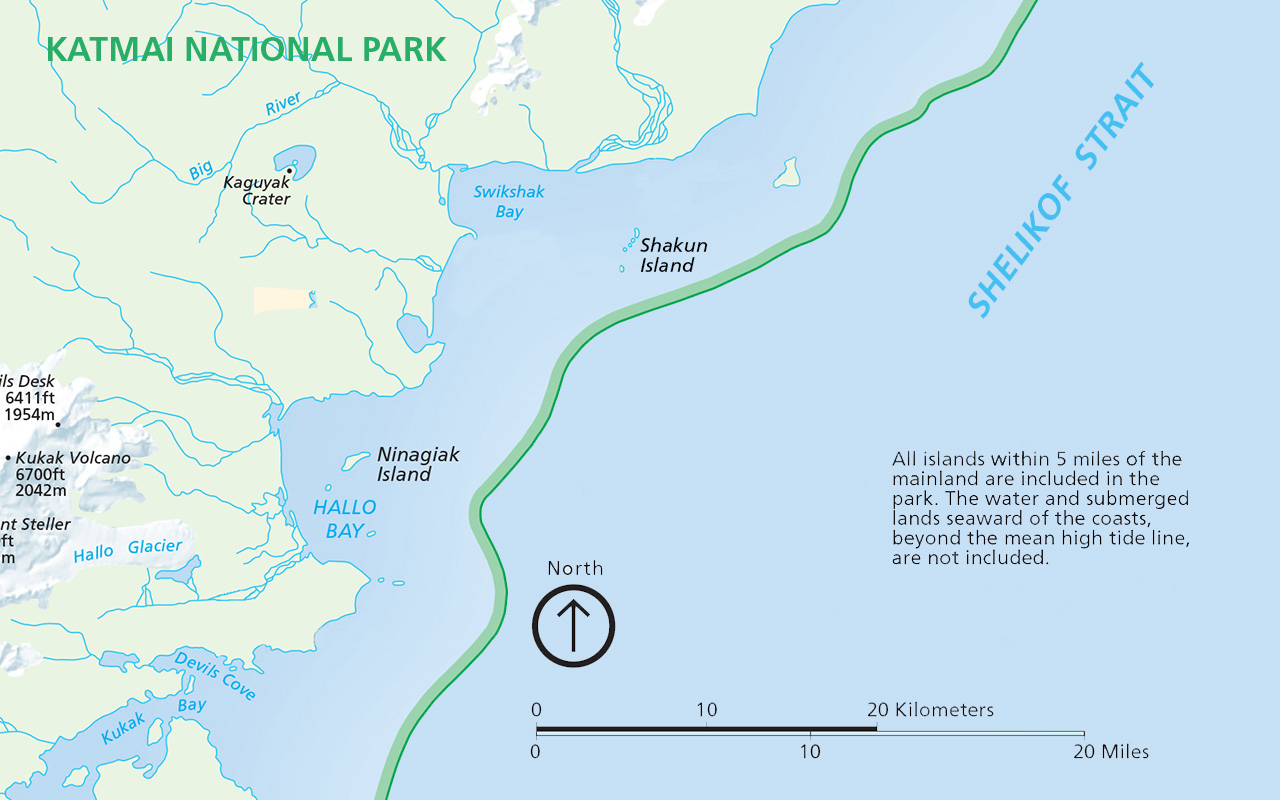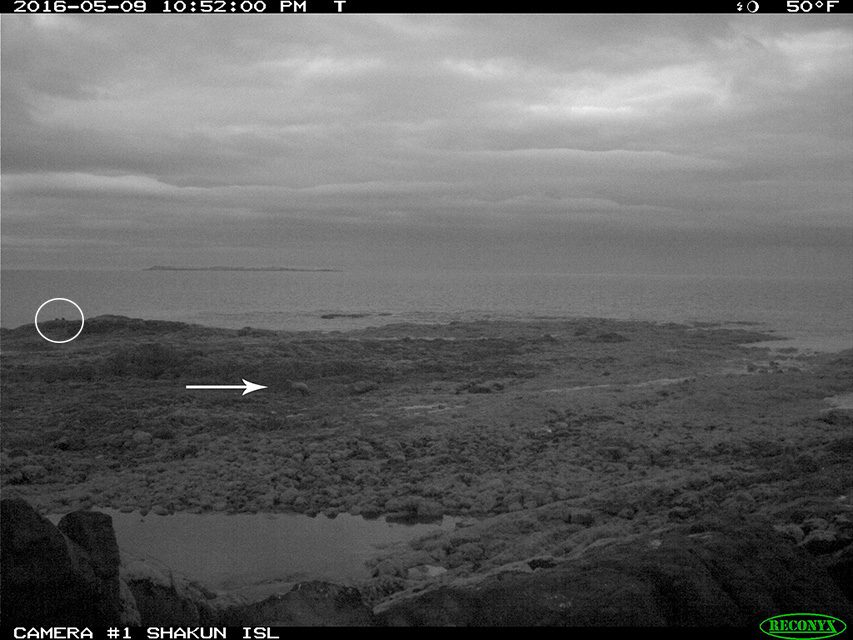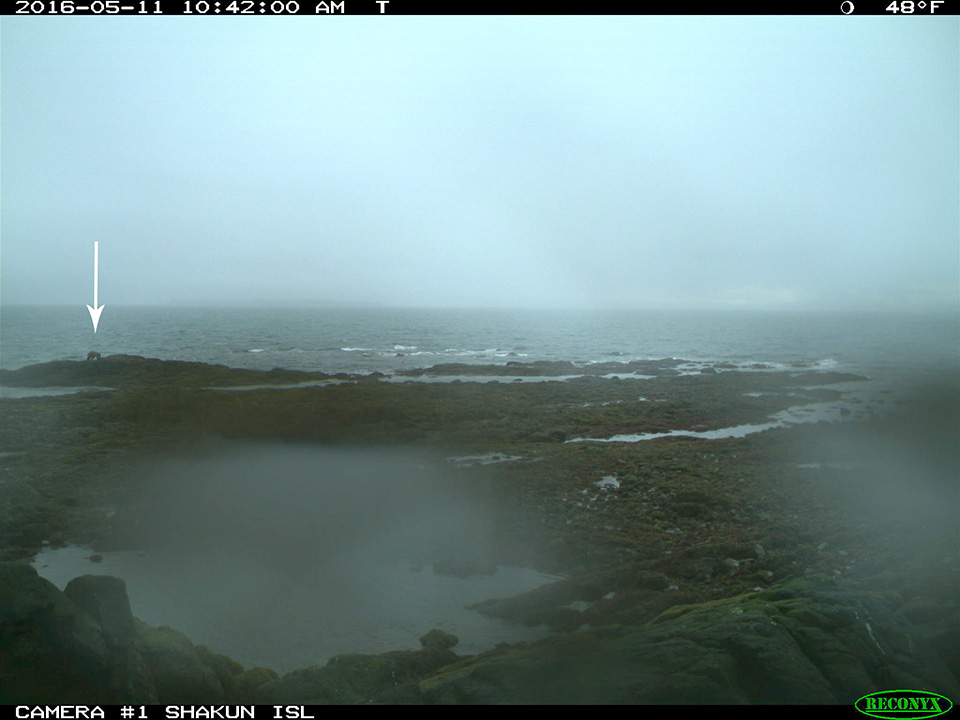The Changing Tides Project is aimed, in part, at understanding how coastal brown bears use intertidal food resources, such as clams and mussels. The first summer of field work in 2015, however, revealed that the bears are not only eating shellfish, but some are targeting marine mammals like otters and harbor seals. Researchers set up two RECONYX professional series trail cameras this past spring to see if they could capture some of this marine mammal hunting on camera. These cameras were set to take one picture every two minutes for twenty-four hours a day during the summer months. They were also set to take several pictures if motion is detected within 50-80 feet in front of the camera. Anyone who has set up remote/trail cameras knows the tedious amount of time it takes to go through these thousands of photos. However, perseverance has paid off in this case, and researchers, have noticed some interesting interactions!

Shakun Island and Ninagiak Island were chosen to be locations for the remote cameras because of the amount of sea otter skulls found during the annual Nearshore Monitoring Trips in the past years.
Earlier in May a lone bear had been seen patrolling a reef on Shakun Island. From the photos researchers can see that sea otters have been hauling out here, getting up onto the rocks, every morning and evening. The bear is often near the area that the sea otters haul out on. On the night of May 9th, the bear is photographed running across the reef from right to left. The bear leaves the camera’s view, so no kill is observed.

Though sometimes difficult to see, a bear was seen on Shakun Island from May 3rd to May 11th, except for May 8th. The sea otter haul-out is the farthest rocks out on the left side of the image. The two small knobs circled on top of the rock are hauled out otters. NPS/USGS Photo
On May 10th, at 8:30 am the bear shows up in front of the camera again, this time with a sea otter in its mouth. Since no kill was documented on camera, it is hard to be certain if the bear killed the sea otter. However, it does not seem likely to have been scavenged, as the carcass appears to be fresh. After spending about 19 minutes eating the carcass, the bear left it in front of the camera and went to the harbor seal haul out area. Approximately two hours later it came back to retrieve the carcass.

Does this finally begin to answer the question if bears actively prey on sea otters? Now more questions come to mind; how often do bears do this and is low tide the only time they can prey on sea otters? NPS/USGS Photo
The next day, May 10th, the bear again appears out on the main sea otter haul out at 10:30 am. There were several otters visible in the images of the haul out just minutes before the bear reached the rock. It spent about 20 minutes appearing to be eating something. Since it is far it is from the camera, we cannot say with absolute certainty the bear killed the otter, but the location would be right. After the bear left the haul out, bald eagles also gathered in the same location, with two or more visible on the rock looking as if they were tearing at something over the next eight hours, until the tide flooded the reef. This would be consistent with the idea that the bear had made a second kill.

Rain drops, like seen on this picture, can add difficulty to identifying bears, sea otters, or harbor seals. NPS/USGS Photo
Within eight days on Shakun Island, this bear seems to have made at least two sea otter kills. It has also been seen working the harbor seal haul area, but there are no documented kills to date. This summer has been full of fascinating discoveries and surprises, and we can’t wait to find out more with the Changing Tides Project.
